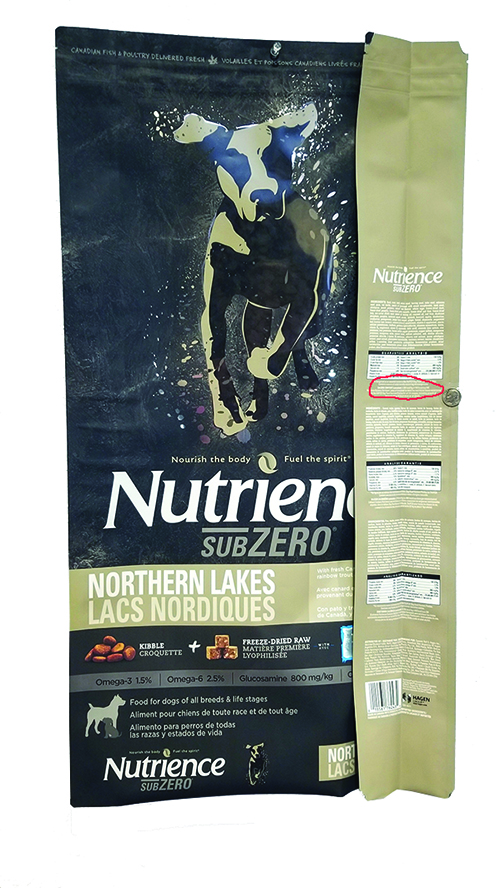It’s bizarre, but one of the most important things on a pet food label is often in the tiniest print: the nutritional adequacy statement, aka the “AAFCO statement.”
AAFCO stands for the Association of American Feed Control Officials. This is the organization that developed the standards the industry uses to determine what constitutes “complete and balanced” nutrition for dogs (and other animals). Every pet food label has a statement on it that references AAFCO. The statement tells you whether the food is meant for “intermittent and supplemental feeding only” – meaning it’s not complete and balanced – or whether it provides complete and balanced nutrition.
The statement will also indicate whether the food has been formulated for “adult maintenance” only, or whether it can be fed to dogs in “all life stages,” which includes puppies, pregnant or lactating mothers, and all adults.
If the AAFCO statement says the food is formulated to meet the nutritional levels for “growth,” it has met the same standards as foods for “all life stages.” Foods that are formulated for puppies (growth or all life stages) contain higher levels of protein, fat, calcium, phosphorus, sodium, chloride, iron, copper, manganese, and zinc than foods that have been formulated for “adult maintenance” only.
Attention, owners of large-breed puppies
The maximum level of calcium for large- and giant-breed puppies is lower than maximum amount allowed for small-breed puppies and adult dogs. Too much calcium can cause bone and joint abnormalities in large-breed puppies (defined by AAFCO as those who are likely to mature at more than 70 pounds).
In 2016, in acknowledgment of the need for reduced calcium for large-breed puppies, AAFCO began requiring food makers to specify whether their foods (formulated for growth or all life stages) meet these new requirements for large-breed puppies.
If the AAFCO statement says the food is for growth/all life stages “including growth of large-size dogs (70 pounds or more as an adult),” it is safe to feed to large breed pups.
If the statement says the food is for growth/all life stages “except for growth of large-size dogs (70 pounds or more as an adult),” it should not be fed to large-breed puppies.
To be safe, if you have a large-breed puppy, or a mixed-breed pup who looks like he may grow to more than 50 or 60 pounds, you should choose foods with the “including growth of large-size dogs” statement. Smaller-breed puppies can be safely fed foods with either statement.
Related Posts
Four Steps to Personalized Nutrition
Whole Dog Journal’s Approved Dry Dog Food List







My dog just like dry food can I give him can food.